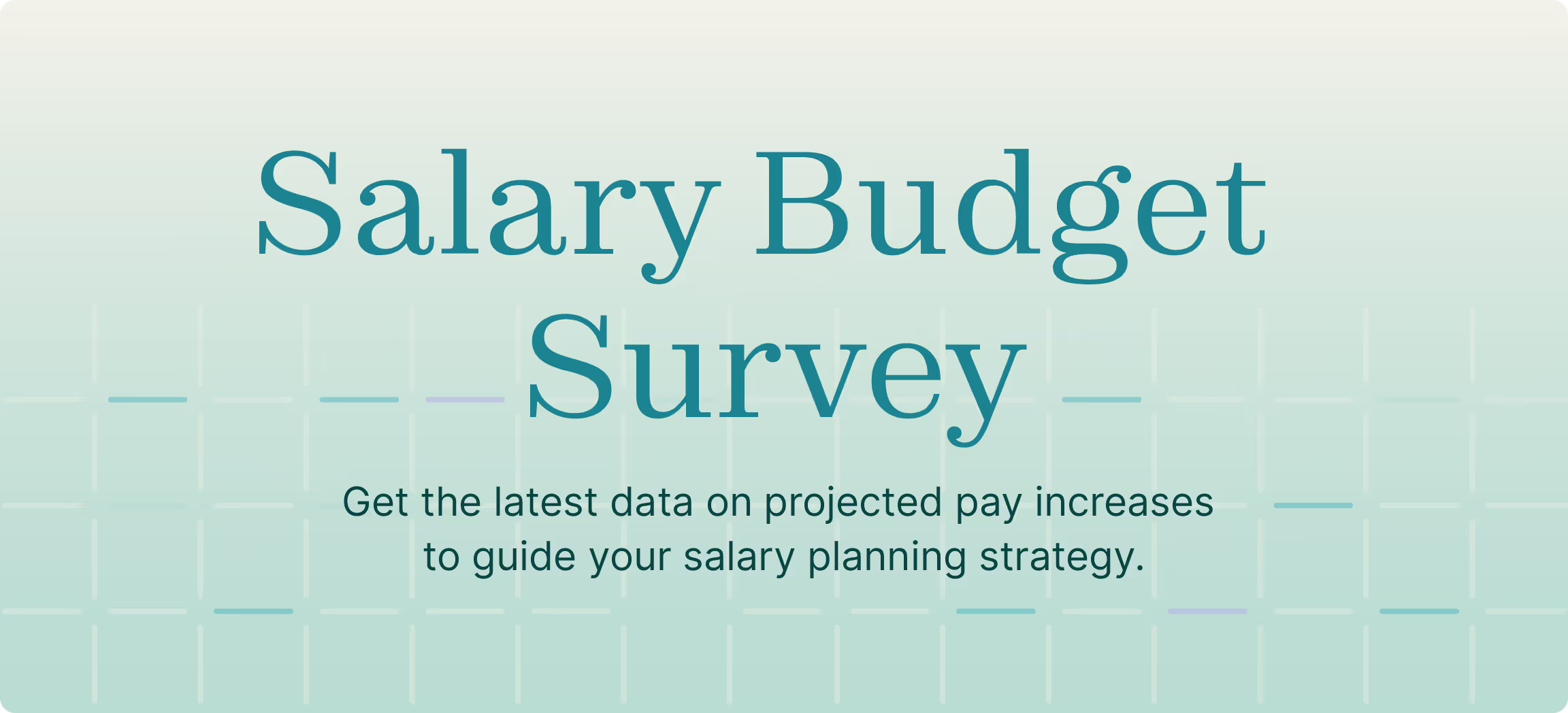As HR leaders and compensation professionals begin building their pay increase strategies for the upcoming year, Payscale’s newly released 2025–2026 Salary Budget Survey (SBS) offers essential data to help guide decisions.
Drawn from survey data of 1,551 participants between May and June 2025, this report from Payscale reveals current and planned salary increases across the U.S., Canada, and select other countries.
Download the full report.
Sign up for 2026-2027 survey.
Pay increase planning is especially critical in the 2025-2026 economy
The July jobs report from the Bureau of Labor Statistics included steep downward revisions to the May and June reports, which may have organizations questioning the stability of the economy and the state of the labor market.
The BLS July 2025 jobs report, released on August 1, showed that the U.S. added just 73,000 nonfarm jobs, substantially below the forecast of 100,000 jobs. Massive downward revisions to May and June eradicated 258,000 estimated jobs, with the most recent data showing only 19,000 jobs added in May and 14,000 jobs added in June.
Job revisions may be due to a variety of factors, but recent events include the firing of hundreds of thousands of federal workers, immigration policy, and tariffs, which have scrambled economic data. Notably, most job gains occurred in health care and social assistance, while sectors such as manufacturing and the federal government saw declines.
So far, the unemployment rate has held steady at 4.2 percent, while average hourly earnings have risen 3.9 percent year-over-year, continuing to outpace inflation, which stands near 2.7 percent. Wage growth has been notably uneven across sectors and income levels. Also, inflation is starting to rise.
In this climate of widening wealth inequality and economic uncertainty, employers are urged to refer to wage sources beyond the BLS, such as Payscale, and stress-test salary budgets under conservative hiring and compensation assumptions.
Pay increases to decline in 2026, but should they?
Employers across North America are approaching 2026 with caution. U.S. organizations are planning for a 3.5 percent salary increase in 2026, down slightly from the 3.6 percent granted in 2025. Canadian employers expect 3.3 percent, down from 3.4 percent in 2025.
Average total base-pay increases for all employees
Notable shifts include a 0.5 percent decrease in pay increases for the Technology sector, marking a reversal from years of high growth prior to 2023. Education and Food, Beverage, and Hospitality also continue to report lower-than-average increases.
But should pay increases decline, especially if inflation is rising?
Pay increases tend to track against the cost of labor, not the cost of living, and wage growth typically exceeds inflation. However, this isn’t always the case. Inflation spiked well above wage growth following the COVID-19 pandemic, and pay increases fell woefully short of the rising cost of living for several years. The world had braced for a recession by laying off over 20 million people in 2020, but demand for goods unexpectedly surged in certain sectors, leading to corresponding high demand for labor, high salary offers, the Great Resignation, and rapid wage growth.
Pay increases eventually caught up, and pay is higher now than cumulative inflation compared to before 2020. But we are potentially entering another era of economic uncertainty. Inflation could spike, either temporarily or long-term, and the robustness of the job market looks less robust following the July jobs report, which could mean a recession is around the corner.
If the labor market remains torpid and the economy shrinks, we could be looking at stagflation — a grim economic situation where the cost-of-living increases but business declines, hiring stalls, and pay increases shrink.
According to Payscale’s 2025-2026 Salary Budget Survey, only 16 percent of U.S. organizations expect a higher salary increase budget in 2026 — down 3 percentage points from the prior year, while 68 percent plan to keep budgets the same, while another 16 percent plan reductions. Organizations cite economic uncertainty and reduced competition for labor as the main drivers of their salary budgets going into 2026.
Preparing to pivot on pay increases when the future is uncertain
It should be noted that Payscale’s Salary Budget Survey was fielded in May and June, before revisions to the jobs report. Organizations paying attention to economic data may revise their pay increase strategy in the coming months as they watch inflation, GDP, and interest rates closely. Some may choose to set aside a reserve in case there is a need to pivot on pay increase strategy — up or down — to attract and retain talent in challenging circumstances.
Employers are advised to use multiple salary data sources to remain competitive and reduce risk of attrition. Payscale’s Salary Budget Survey is full of useful, detailed data for organizations reviewing pay increases given in 2025 and planning salary budgets for 2026.
As the market is constantly shifting, we also recommend continuing to participate in surveys and keeping track of inflation and wage growth. Payscale’s Compensation Best Practices Survey is fielded Q4 (October-December) and is the next research available to inform pay increases.
2025-2025 Salary Budget Survey is now available
Get unparalleled insights on salary increase budgets for 2026.
Register for Compference25
Hear from leading voices shaping the future of pay.






.avif)